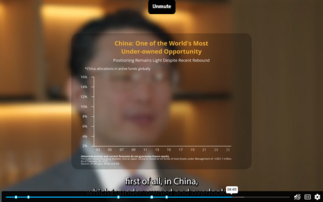Industry Voice: Sponsored by Eaton Vance
Emerging markets debt (EMD) opened the first month of the year with a strong upturn in performance after disappointing returns in 2018. In January, sovereign local-currency EMD posted returns of 5.5%, while sovereign hard-currency rose by 4.4% and corporate (dollar-denominated) debt increased by 2.7%, according to the JPMorgan emerging markets bond indices.[1]
The magnitude of the recovery becomes clearer when considering that the one-month gains in January have either come close to or completely made up for the ground lost in sovereign local-currency (-6.2%), sovereign hard-currency (-4.3%) and corporate (-1.7%) EMD over the entirety of 2018.
With a challenging end to the year for risk assets globally, we began to grow more bullish on EMD when the initial signs of a turnaround started shining through late in the year. That is not to suggest that all of 2018's headwinds have faded away, but that on balance we believe the asset class is well positioned for 2019.
Bullish on EM debt
A number of factors support our growing optimism toward the asset class. The first is that we see particular value in EMD currencies, local interest rates and sovereign credit spreads, although we hold a more neutral view on corporate bonds.
In our view, external risks are moderating and better reflected in the price and, as a result we expect volatility in the asset class to decline. We would note that despite asset class volatility last year, flows remained remarkably resilient and we now expect asset class inflows to be supportive, with $10.1 billion flowing into EMD funds globally in January alone (according to JPMorgan) being a case in point.
Developments in the US were a key challenge for EMD last year, but that has now at least partially changed. The first bit of welcome news for EMD investors this year was the US Federal Reserve's reversal to a more dovish tack in the lead up to its January policy meeting. The Fed solidified its message on monetary policy at that meeting, charting a markedly different course than just one month prior and from the four rate hikes it affected in 2018.
Less auspiciously, the Trump administration, along with an increasingly assertive Congress, still pose risks to the asset class. The list of countries facing the threat of US sanctions is becoming too long to count. However, with a Democratic House and the 2020 election campaign beginning we expect the policy orientation to have a more domestic focus.
Conclusion
Overall, the macro factors that weighed on the asset class in 2018 have moderated, giving the sector a new hope. The Fed appears to be pausing its tightening cycle, while the Trump administration turns its focus inward. Additionally, while country fundamentals remain disappointing in aggregate, we are seeing improvement in places and expect more going forward.
Today, we consider EMD valuations to be attractive. We are more constructive on macro drivers and the future for policy improvement, yet, still maintain that investors considering EMD rely on country-specific due diligence and careful evaluation of risk factors given the extraordinary diversity of the opportunity set.
Sources: JPMorgan, Eaton Vance. As at 31 January 2019.
For Professional Clients/Institutional Investors use only. This material is presented for informational and illustrative purposes only and should not be construed as investment advice, a recommendation to purchase or sell specific instruments, or to adopt any particular investment strategy. It has been prepared on the basis of publicly available information, internally developed data and other third party sources believed to be reliable.
Eaton Vance Management (International) Limited ("EVMI") is not responsible for any subsequent investment advice given based on the information supplied. Past performance is not a reliable indicator of future results. This material is issued by EVMI who is authorised and regulated in the United Kingdom by the Financial Conduct Authority. Visit EVMI at https://www.eatonvance.co.uk.
JP Morgan Government Bond Index - Emerging Market (GBI-EM) Global Diversified is an unmanaged index of local-currency bonds with maturities of more than one year issued by emerging markets governments. JP Morgan Emerging Markets Bond Index (EMBI) Global Diversified is an unmanaged index of USD-denominated bonds with maturities of more than one year issued by emerging markets governments. JP Morgan Corporate Emerging Market Bond Index (CEMBI) Broad Diversified is an unmanaged index of USD-denominated emerging market corporate bonds. There is a greater risk of volatility, adverse market, economic, political, regulatory, geopolitical and other conditions in emerging markets.
[1] The JPMorgan Government Bond Index-EM (GBI-EM) Global Diversified covers local-currency bonds, while the JPMorgan EM Bond Index (EMBI) Global Diversified and the JPMorgan Corporate EM Bond Index (CEMBI) Broad Diversified cover hard-currency sovereign and corporate debt, respectively.











